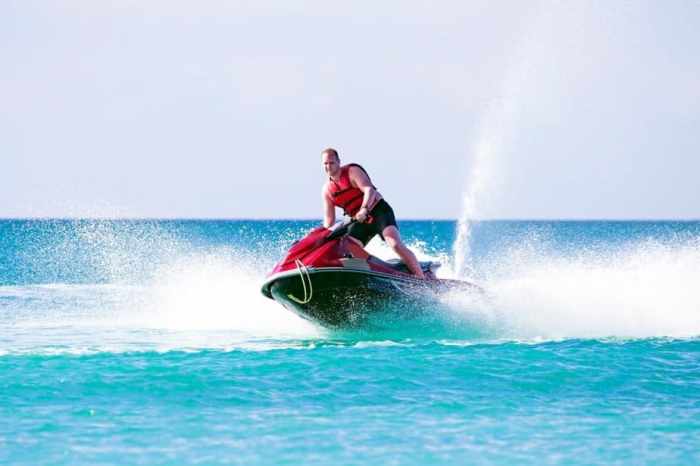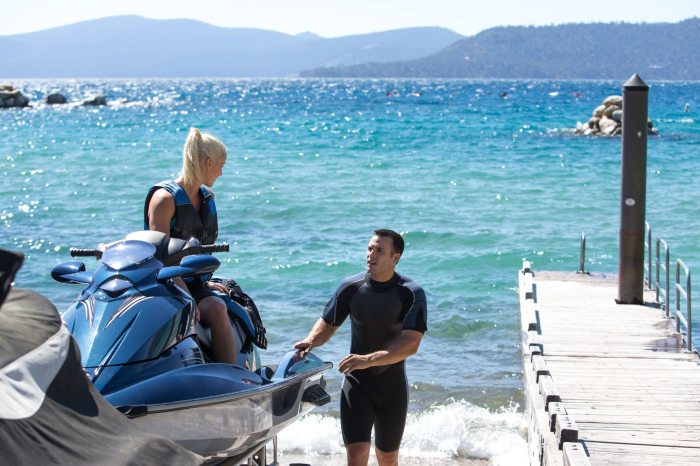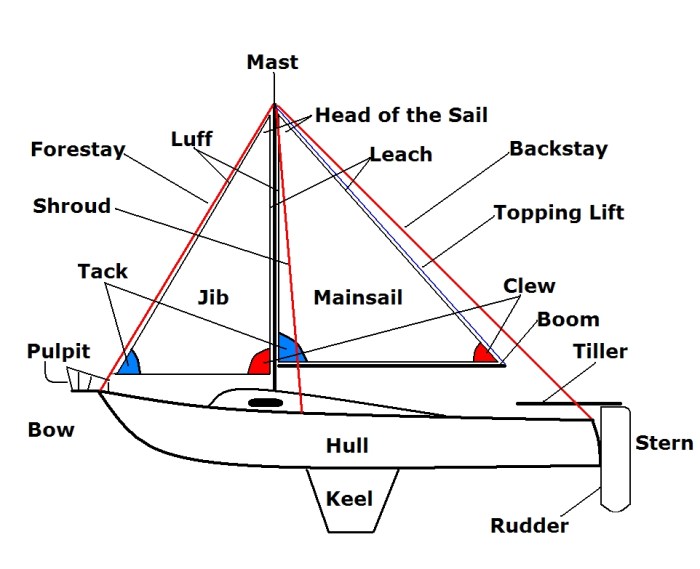What should a sailboat do when approaching a pwc – Navigating the waters safely and respectfully requires an understanding of the rules and etiquette surrounding different vessels. In this comprehensive guide, we delve into the specific considerations for sailboats approaching personal watercraft (PWCs), ensuring a harmonious coexistence on the open water.
As we explore the intricacies of communication, right-of-way regulations, maneuvering techniques, and legal implications, we empower sailboat operators with the knowledge and strategies to approach PWCs with confidence and minimize the risk of accidents.
Safety Precautions: What Should A Sailboat Do When Approaching A Pwc

Maintaining a safe distance from PWCs is crucial to avoid collisions and ensure the safety of both vessels. PWCs are highly maneuverable and can travel at high speeds, making it essential for sailboats to remain at a safe distance to prevent any potential accidents.
Collisions between sailboats and PWCs can have severe consequences. The impact can cause damage to both vessels, injuries to occupants, and even fatalities. To mitigate these risks, it is imperative for sailboats to maintain a safe distance and be aware of the surroundings.
Tips for Avoiding Accidents
- Always keep a sharp lookout for PWCs, especially in areas with heavy traffic.
- Maintain a safe distance of at least 100 feet from PWCs, and increase the distance if possible.
- Be aware of the blind spots of PWCs and avoid operating in these areas.
- Be prepared to take evasive maneuvers if a PWC approaches too closely.
- Educate yourself about the local boating regulations and any specific rules regarding PWCs.
Communication and Signaling
Effective communication between sailboats and PWCs is essential to ensure safe navigation and avoid misunderstandings. Both vessels should be aware of the proper communication methods and signals to prevent accidents.
Visual Signals
- Flags:Use the International Code of Signals (ICS) flags to communicate with PWCs. These flags convey specific messages, such as “I am maneuvering with difficulty” or “Keep clear of me.”
- Lights:Use navigation lights to indicate the sailboat’s position and intentions. These lights include the masthead light, sidelights, and stern light.
Verbal Communication
- VHF Radio:VHF radios are the primary means of verbal communication between vessels. Use Channel 16 for emergency calls and Channel 9 for general communication.
- Hail:Use a hailer or loud voice to communicate with PWCs when VHF radio is not available. Clearly state your intentions and any necessary information.
Right of Way Regulations

Understanding the right-of-way regulations is crucial to prevent collisions and ensure the safety of all vessels. These regulations determine which vessel has the priority to proceed in a particular situation.
Stand-On Vessel
A stand-on vessel is a vessel that has the right of way and is not required to take any action to avoid a collision. In most cases, sailboats are considered stand-on vessels when approaching PWCs.
Give-Way Vessel
A give-way vessel is a vessel that must take action to avoid a collision with a stand-on vessel. PWCs are typically considered give-way vessels when approaching sailboats.
Examples of Right of Way
- A sailboat on a starboard tack has the right of way over a PWC approaching from the port side.
- A PWC approaching a sailboat from behind must give way to the sailboat.
- If a sailboat and a PWC are approaching each other head-on, both vessels must alter course to avoid a collision.
Maneuvering Techniques

When approaching PWCs, it is important for sailboats to employ appropriate maneuvering techniques to avoid accidents and ensure safe navigation. These techniques include evasive maneuvers, sail adjustments, and proper boat handling.
Evasive Maneuvers
- Tacking:Turning the sailboat’s bow through the wind to change direction.
- Jibing:Turning the sailboat’s stern through the wind to change direction.
- Bearing Away:Turning the sailboat away from the PWC to increase the distance.
Sail Adjustments, What should a sailboat do when approaching a pwc
- Reefing:Reducing the sail area to slow down the sailboat and improve maneuverability.
- Trimming:Adjusting the sails to optimize the boat’s speed and handling.
Boat Handling
- Steering:Using the rudder to control the sailboat’s direction and avoid collisions.
- Throttle:Adjusting the engine throttle to control the sailboat’s speed.
- Crew Coordination:Ensuring that the crew is well-coordinated and ready to assist with maneuvers.
Anchoring and Mooring Considerations
Anchoring or mooring a sailboat near PWCs requires careful consideration to avoid potential risks and ensure the safety of both vessels. It is important to be aware of the challenges and take appropriate precautions.
Challenges
- Limited Maneuverability:Anchored or moored sailboats have limited maneuverability, making it difficult to avoid collisions with PWCs.
- Increased Risk of Fouling:PWCs can create wakes that can cause anchor lines or mooring lines to become entangled.
- Noise and Disturbance:PWCs can generate noise and disturbance that can be disruptive to anchored or moored sailboats.
Precautions
- Choose a Safe Location:Select an anchoring or mooring spot that is away from areas with heavy PWC traffic.
- Use Adequate Anchoring or Mooring Gear:Ensure that the anchor or mooring lines are strong enough to hold the sailboat securely.
- Monitor the Surroundings:Keep a lookout for PWCs and be prepared to take evasive action if necessary.
- Communicate with PWCs:Use VHF radio or visual signals to communicate with PWCs and inform them of your anchored or moored position.
Legal Implications

Sailboat operators have legal responsibilities when interacting with PWCs. Understanding these responsibilities is crucial to avoid legal disputes and ensure the safety of all parties involved.
Negligence and Reckless Behavior
Sailboat operators have a duty of care to operate their vessels in a safe and responsible manner. Negligence or reckless behavior can lead to legal liability in the event of an accident with a PWC.
Consequences of Negligence
- Civil Liability:Sailboat operators may be held financially responsible for damages caused to PWCs or injuries to occupants.
- Criminal Charges:In cases of gross negligence or reckless behavior, sailboat operators may face criminal charges.
Avoiding Legal Disputes
- Follow Boating Regulations:Comply with all applicable boating regulations, including those related to right of way, speed limits, and anchoring or mooring.
- Maintain a Safe Distance:Keep a safe distance from PWCs and be aware of their blind spots.
- Communicate Effectively:Use appropriate communication methods to inform PWCs of your intentions and avoid misunderstandings.
- Document Interactions:Keep a log or record of any interactions with PWCs, including any potential hazards or concerns.
Expert Answers
What is the most important safety precaution when approaching a PWC?
Maintaining a safe distance is paramount to avoid collisions and potential injuries.
How should sailboats communicate with PWCs?
Visual signals (flags or lights) and verbal communication via VHF radio are effective methods.
Who has the right of way when a sailboat and a PWC meet head-on?
The sailboat has the right of way as the “stand-on” vessel, while the PWC is the “give-way” vessel.